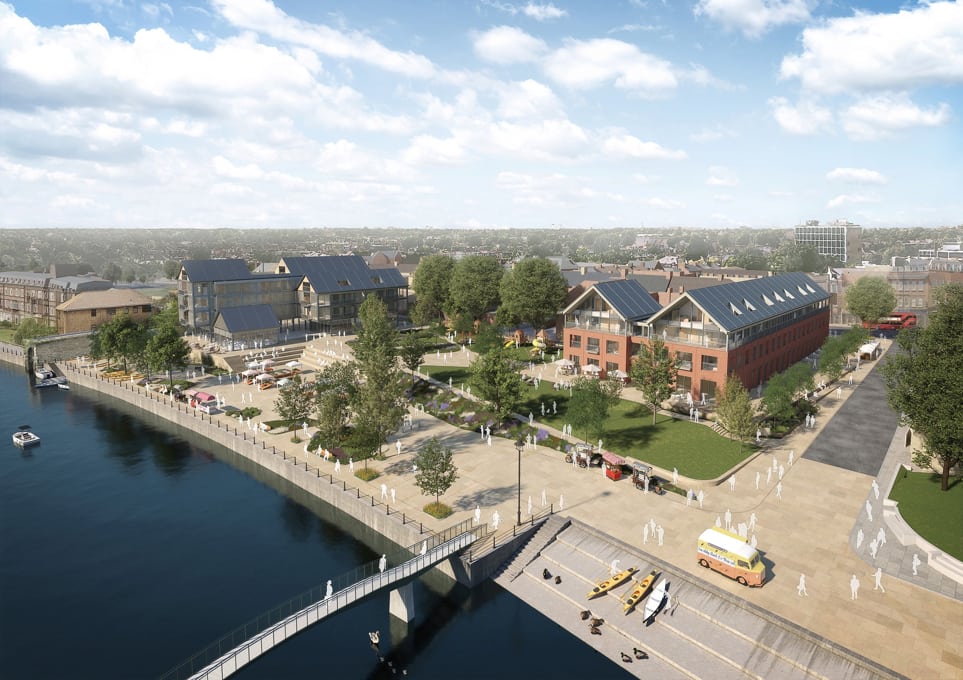Richmond Twickenham Riverside Building Regulations: What Every Builder Should Consider
Richmond’s, particularly the picturesque Twickenham Riverside, is one of the most sought-after areas in London, known for its breathtaking views of the River Thames, historical landmarks, and an overall charming atmosphere. Whether you are considering a home renovation, extension, or embarking on a new build project, understanding Richmond Twickenham Riverside building regulations is crucial to ensure the success of your project. These regulations are designed to maintain safety, environmental harmony, and the preservation of the area’s aesthetic character.
What Are Building Regulations and Why Are They Important?
Building regulations are a set of standards and rules designed to ensure that buildings are safe, functional, and energy-efficient. They cover everything from structural integrity to fire safety, energy use, and accessibility. For those planning to develop properties in Richmond Twickenham Riverside, it’s important to recognize that adhering to building regulations is a legal requirement. Non-compliance can lead to penalties, expensive delays, and possibly even the demolition of non-compliant structures.
For developers and homeowners, understanding these regulations will help streamline the approval process and ensure the longevity of the property. Moreover, these regulations aim to protect the unique landscape of Twickenham Riverside, which is a significant concern due to the area’s historical and environmental value.
Types of Building Regulations in Twickenham Riverside
- Planning Permission and Building ControlThe first step in any construction or alteration project in Twickenham Riverside is to determine whether planning permission or building regulations approval is required. While planning permission addresses the aesthetics and impact of a project on the environment, building regulations focus on the safety and functionality of the construction.
- Planning Permission: If you are making changes to the external appearance of a property or if your project involves significant structural work, you may need to apply for planning permission through the local council, Richmond Borough Council. For example, alterations that could affect the riverside views, the natural environment, or the character of nearby buildings might require planning consent.
- Building Control: This applies to ensuring that your construction or alteration complies with national standards for safety, health, and energy efficiency. Building control ensures that your project meets the legal requirements before, during, and after construction.
- Structural Integrity and Safety RegulationsThe structural integrity of buildings along the Twickenham Riverside is of paramount importance, particularly due to the area’s proximity to the River Thames. Flooding, erosion, and water drainage can pose challenges to construction. Therefore, projects must comply with regulations related to:
- Foundations: Builders must ensure that foundations are appropriate for the ground conditions in this riverside location. In some cases, additional flood-proofing measures may be required.
- Flood Risk Assessments: Given the area’s proximity to the river, projects often require a flood risk assessment to ensure that construction methods do not exacerbate flooding risks.
- Drainage and Water Management: Proper drainage is essential in Twickenham Riverside to prevent water damage to the building or surrounding properties. Building regulations ensure that water is channeled effectively, particularly in areas where the risk of flooding is higher.
- Energy Efficiency and SustainabilityIn the modern era, sustainability is a growing concern for both local authorities and property owners. Richmond Borough Council has put a focus on promoting energy-efficient and environmentally friendly buildings. Building regulations for energy efficiency in the Twickenham Riverside area include:
- Insulation Standards: Ensuring that buildings are properly insulated to reduce energy consumption and improve comfort.
- Sustainable Design: Developers are encouraged to incorporate renewable energy sources, such as solar panels or rainwater harvesting systems, where feasible. The use of low-carbon materials and techniques can also contribute to meeting sustainability goals.
- Heritage Protection and Design ConsiderationsThe Twickenham Riverside area is home to a number of historic buildings and landscapes, some of which are listed or fall under conservation areas. As a result, additional regulations apply to ensure that any construction or renovation respects the historical significance of the location.
- Conservation Area Guidelines: If the project is located within a conservation area, special design guidelines apply to protect the architectural integrity of the surroundings. Any work that could affect the appearance or structure of a listed building or its immediate environment may require extra scrutiny and approval from the council.
- Sensitive Construction Practices: Developers must use materials and techniques that complement the existing character of the area. This could involve using traditional brickwork, retaining existing features, or ensuring that new constructions don’t overshadow or disrupt the views and ambiance of the riverside.
- Fire Safety and AccessibilityFire safety regulations are critical in all construction projects, and the same applies to properties along the Twickenham Riverside. Whether you’re building a new home or renovating an existing property, ensuring fire safety is a legal requirement.
- Fire Escapes and Evacuation Plans: Buildings must be designed with proper fire exits, especially in multi-storey structures.
- Accessibility Requirements: All new buildings and significant renovations must adhere to regulations that ensure accessibility for people with disabilities, including ramps, lifts, and appropriate door widths.
- Building Regulations for Extensions and ConversionsFor homeowners looking to extend or convert their properties in Twickenham Riverside, there are specific regulations to ensure the work is structurally sound and fits in with the neighborhood.
- Extensions: Whether adding a single-storey or double-storey extension, building regulations must be followed to ensure the extension does not negatively impact neighboring properties and is structurally sound.
- Conversions: Converting a loft, basement, or garage requires adherence to building regulations regarding insulation, ventilation, and access. In some cases, basement conversions may require additional considerations for flood protection and waterproofing.
Navigating the Building Regulations Process in Twickenham Riverside
- Consultation with Local AuthoritiesBefore starting any project, it’s advisable to consult Richmond Borough Council to determine the specific regulations that apply to your property. They can provide information on required permissions, documents, and assessments needed to begin work.
- Engaging ProfessionalsIt’s highly recommended to engage architects, structural engineers, and building control professionals who are familiar with local building regulations in Twickenham Riverside. They will guide you through the process, help prepare detailed plans, and ensure compliance with all necessary codes.
- Submitting ApplicationsOnce you’ve gathered the necessary information and plans, submit your application for both planning permission and building regulations approval. Ensure that all the required documents are submitted accurately to avoid delays.
- Inspections During ConstructionAs construction progresses, building control officers will conduct inspections to ensure compliance with the regulations. Make sure that all work is completed as per the approved plans to avoid penalties or the need for costly alterations.
- Final ApprovalAfter your project is completed, a final inspection will be carried out to confirm that everything adheres to the regulations. Once approved, you can enjoy your newly constructed or renovated property with peace of mind.
Conclusion
Understanding the building regulations in Richmond Twickenham Riverside is an essential part of any construction or renovation project. By adhering to these guidelines, property owners and developers can not only ensure the safety and longevity of their buildings but also preserve the area’s unique character and environmental integrity. With the right approach and expert guidance, you can transform your property while complying with all necessary regulations, contributing to the vibrant and picturesque charm of Twickenham Riverside for years to come.



No responses yet